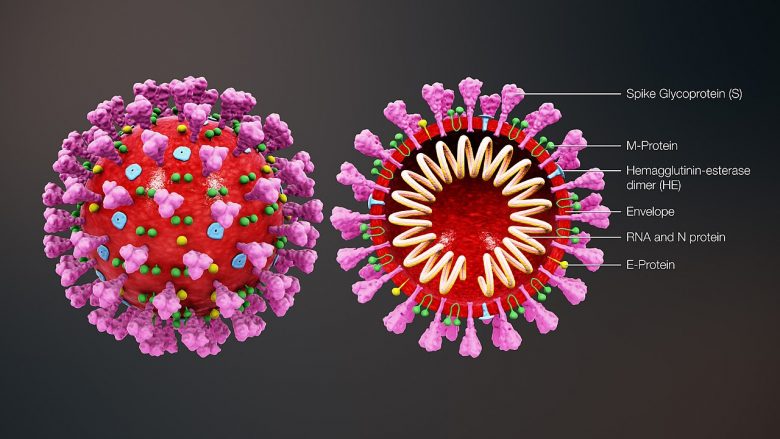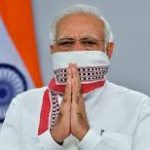
Delhi5:37 PM | 26th April 2024
As we know, the Covid-19 global pandemic is an unforeseen uncertainty; hence any attempt to make scenarios-based planning (as we teach in B-school) may not work. In the book “Managing the Unknown” [3] it says that in such a situation what will help is a trial and error learning (learn as we move with the problem).

For the last two months the world has been taken over by the novel coronavirus. It has indiscriminately infected 2.9 million people with an alarming death toll of 200,000 people affecting 210 countries across the globe. Evidently, most of the people on the planet have not experienced a pandemic of this nature. While there are about 65,000 deaths in the USA with a population of about 320 million, death per one million population is 197, whereas the same statistics for India appears to be in a mitigating state. To date, India has reported 26,917 cases [1, 2] and 1233 deaths in a country of 1.3 billion population, making it close to 0.9deaths per million population.
As we know, the Covid-19 global pandemic is an unforeseen uncertainty; hence any attempt to make scenarios-based planning (as we teach in B-school) may not work. In the book “Managing the Unknown” [3] it says that in such a situation what will help is a trial and error learning (learn as we move with the problem).
The real problem in a pandemic is that the demand of goods and services are uncertain and the demand keeps changing as the pandemic is spreading. This triggers a problem for managing the inventory and results in a supply chain upheaval. Here are some of the operations management techniques that possibly helped India.

Being Proactive:
The best way to handle the situation is to take early action. When the total number of reported cases in India[1,2] was 499 (March 23), the death toll was 23. India decided to go on a complete lockdown. At this point USA had 44,400 confirmed cases of Covid-19 and 689 deaths on March 23, 2020.At this time, Italy reported 69,000 cases and 68,00 deaths and the U.S. did not enforce large scale quarantine. No matter what the critics of lockdown argue in terms of economic loss, an early lockdown is found to be effective. It is a given that the economic benefits of a lockdown will boil down to the fundamental question as to what is the number of lives saved, the economic value of a human life and what is the benefit (or value) of number of lives saved? Based on the compensation provided by the Government of India or various state governments on an accidental death case on a road, economic value of life becomes INR 600,000. This economic value for an individual life at this rate may not justify a lockdown. However, if we value life at the living standard of the population of the US at 7.5 million USD to 10 million USD per live saved, then saving 100,000 lives by an early lockdown will make saving a trillion USD dollar and certainly justify the decree.
Reduce Demand with an Early lockdown:
If we make an International comparison, we will find that while USA has2.9 beds per 1000 and 2.6 physicians per 1000 population [4], Italy has 3.4 hospital beds and 4.1 physicians per 1000, South Korea has 11.4 hospitals and 2.4 physicians per 1000, India has only 0.7 hospitals and 0.8 Physicians per 1000. In other words, if the early lockdown was not enforced in India, it may not be in opposition to handle the pandemic and its aftermath. So the best strategy for India was to reduce the demand and not let the pandemic spiral out of control. With an early lockdown, it actually reduced the immediate future demand for beds, ventilators, personal protective equipment such as gloves, masks, sanitizers and the like. India had about 1.4 million of hospital beds. This in real terms reduces to 100,000 beds only if the length of stay is 14 days for an average patient. If the crisis goes out of control, there would have been serious shortage of hospital beds and India may have needed tens of thousands of beds per week. This adept decision bought us time to create capacities for manufacturing, procuring and resourcing from abroad.
Create a Capacity for Products and Equipment:
One of the important machines in this scenario is the requirement of ventilators. It is vital when it comes to saving the lives of critically ill patients. There are a total of seven ventilator manufactures in the country in Mumbai, Chennai, Ahmedabad, Thane, Vadodara, Mysore and New Delhi. Within a time span of two months India has seen a dramatic advancement in the manufacture of ventilators. Initially the plants produced 3000 equipment per month and ever since March the production has increased exponentially that currently we have a total of 50,000 ventilators in the country.
Another immediate urgency was the need to create masks. Masks are essential and it curbs the transmission of virus through egress and ingress. However, according to a video by Dr. Devi Shetty, a renowned heart surgeon in India, N-95 masks should be reserved for infected patients, doctors, nurses and other healthcare professionals alone who are at a higher risk of contracting the virus. Several organizations and individuals came forward to make reusable masks. For example, volunteers at Blind School Association, Ahmedabad supplied ordinary reusable masks.

Create Capacity for Beds for future demand:
India has decided to have ITBP Border camp as quarantine centres and putting people in 14-day strict quarantine has helped to curb the spread of coronavirus. Anticipating that the problem may go out of hand, India decided to convert hotels, schools to temporary hospitals.
Create Mobile Facility or Hospitals:
Indian railways have converted railway coaches to hospitals. This is one of the brilliantly pragmatic ideas that the Government of India has come up with. Indian Railways passenger coaches can travel to any part of country. If these passenger coaches are converted to Covid-19 hospitals, the doctors, nurses, and ICUs can all move to the city or town or villages. As of today, there are about 20000-30000 mobile hospital beds have been created with probably no other parallel in the world.
Need for a Unified Command:
According to an editorial article [6] New England Journal of Medicine, it suggests a period of10 weeks to flatten the coronavirus growth curve. While he wrote this article in the context of the United States, it could be applicable to India as well. According to the article, there is need for a Unified Command under the head of the state and it appoints a person under the Direct Command of the head of the state. The commander has the respect of all the people in the country and must have the authority to execute orders.
It is necessary to mention the coherent decisions implemented by the Prime Minister of India. He has led from the front. He addressed the nation on TV and declared a three-week lockdown. The initial three week period was increased to another three weeks as part of the second phase of lockdown. Had he not taken the critical decision for an immediate lockdown, India might have been in a rather precarious situation.
Use innovative ideas to Mobilize Law Enforcement authority:
Barring some unfortunate incidents, we found that the country was unified in observing quarantine. This was also the time when people got to see the creative side of our police force that otherwise display their heavy-handed side. In Kolkata, the Police sang a famous song from a Satyajit Ray movie “OraySharabasi, torabairaghurekobi Ki tai Bol” (Oh my dear city residents, what are you going to get being outside).Similarly, the traffic police officers in Mumbai sang in Marathi asking people to wash hands and police officers in Goa sang songs in Portuguese and other languages asking people to stay at home. They came forward and used poetry, stories and many other innovative ideas to make this point clear.

Respect the Warriors:
Like the soldiers of Indian armed forces, even doctors in India are considered one of the best in the world. We have found that India has very highly disciplined, excellence embracing doctors, nurses and paramedics. All of these people deserve our attention and salute. Some have worked continuously for 10-12 weeks. Some doctors worked for days without going home and meeting their families. They have made huge sacrifices for the nation and it is our duty to appreciate the hard work of these doctors and other healthcare professionals. When there was an attack on these warriors by some immature laymen, the government came out with an ordinance [Emergency Executive Order approved by the cabinet and signed by by the President of India] to protect the healthcare professionals of the country and quite appropriately called them corona warriors.
Indigenous Technology Development is important
Indian Council of Medical Research (ICMR) is now experimenting on Plasma Infusion Method[10] to treat the novel corona virus. During the outbreak of the Spanish Flu in 1914,a group of doctors set out to experiment with convalescent blood plasma to treat the patients. It might seem akin to grasping elusive straws at this point but pilot studies have reported the infusions to be successful. In this method blood from the recovered patient (Patient A) after several tests, and the separated plasma alone is injected to another patient (Patient B) who has contracted the novel coronavirus. The blood plasma from patient A is said to have antibodies that can potentially fight the virus in patient B. Human trials have started with the guidance of ICMR and results may be encouraging.
Statistical Analysis Helps:
One of the important points here is the efficiency of transmission (R0 statistics). R0 (pronounced “R-naught”) is the rate at which a virus is transmitted. It is also called the basic reproduction number; it indicates the average number of people who will contract the virus from an infected person, in a population that does not have immunity for the said disease. On 26thMarch 2020, it was 2.2 for USA[8]. According to the study made by IMS, Chennai, on 11th April R0 was 1.55[8, 9] for India. As of 26th April it has come down and is at1.36. We need to go nosedive below 1.0 to flatten the curve.

Worldometer and World meter India [1,2] are two important sources of data and many of these are very helpful for understanding the gravity of the problem. I think this crisis will lead to new dimensions for research for academicians in Statistics, Operations Research Practice or Operations Management and Leadership Issues.
There are a number of questions that are waiting for answers and a large portion of success in countering this threat may depend on the sort of answers we manage to find. There are obviously a few that will get their answers as we progress from one to the other stage in solving this crisis. Questions like…
India is somewhere in the middle of the coronavirus war[9]. Victory is in sight and there are signs that we are close to flattening the curve. But at this point the looming uncertainty makes it difficult to predict when that day will arrive. Only time will tell when we will win this battle against coronavirus and this test will help us in our strategic advantages in the near as well as the distant future.
Copyright© educationpost.in 2024 All Rights Reserved.
